3-port SD datalogger
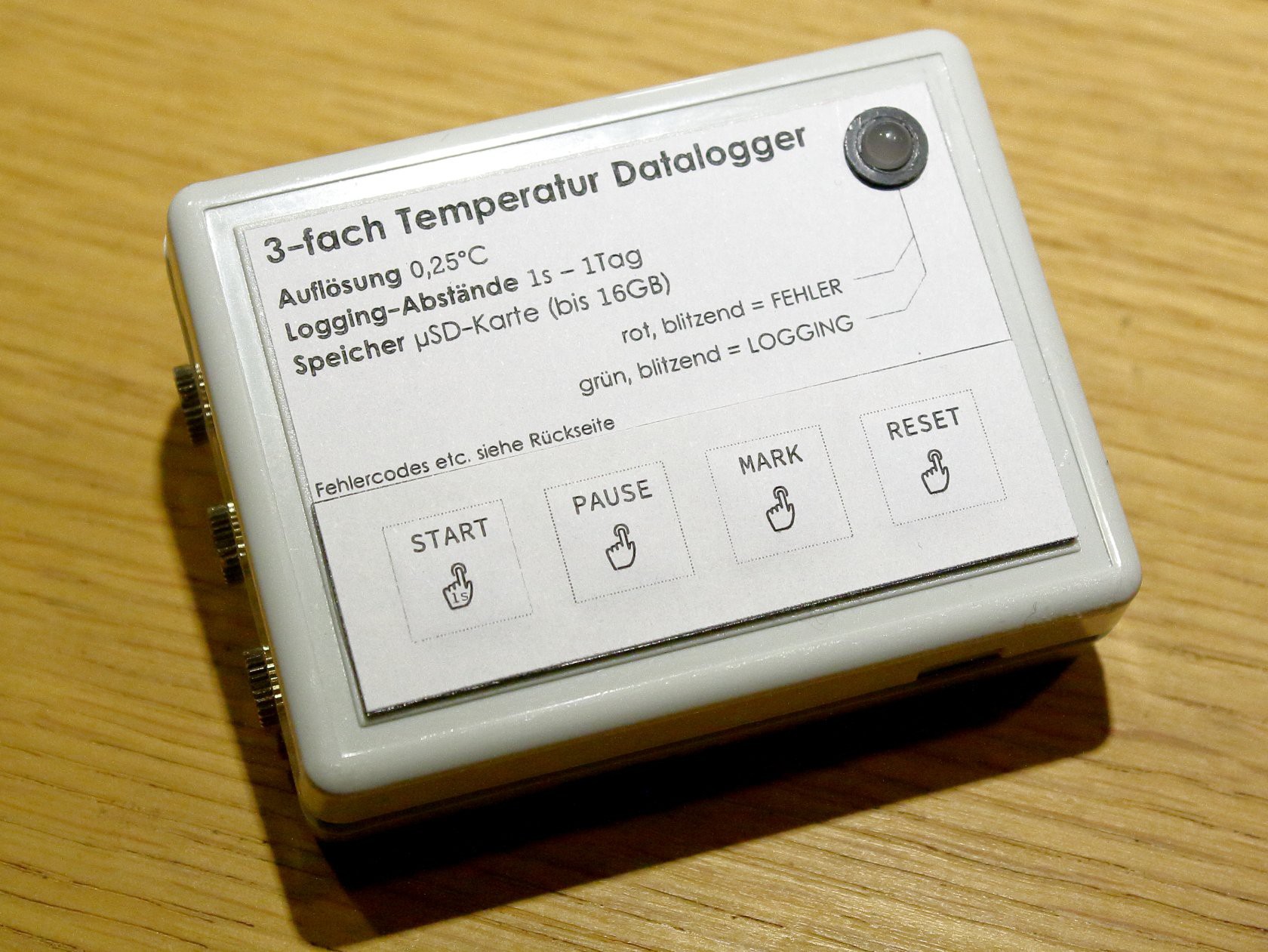
The implemented features are
- precise logging of temperatures with DS18B20 sensors
- storing logs to an SD card
- set markers at moments of interest
- two-color LED shows mode of operation and error codes
The to be added features are*
*which honestly maybe never will be added
- implement a RTC
- include battery in case
- read config from file on SD-card
- deep sleep / power saving mode
adding a nicer sticker to the buttons
Mode of operation
When supplying power, the unit checks for existing sensors, if the SD card is present/working and if a log-file is present. If not it creates one and opens it for writing.
For every passed test the LED flashes green once. If a test fails, it flashes red once. SD/file-tests are critical. If these don't pass, the unit goes into error-mode (pressing RESET required). Sensor-test passes if at least one sensor is present and working.
Sensors are polled in loop(), as I use the non-blocking code of the library. In 10 bit mode conversions needs around 200ms time with a resolution of 0,25°C.
Pressing START/STOPP 1s goes into logging-mode. The LED flashes green to signal logging. Pressing MARK will add a marker in the CSV-file for future reference. Pressing START/STOPP again stops logging and closes the file.
RESET is directly connected to the Arduinos' reset pin. PAUSE-button is not yet connected and thus does: nothing.
Example logs
Log-files (at the moment) look like this:
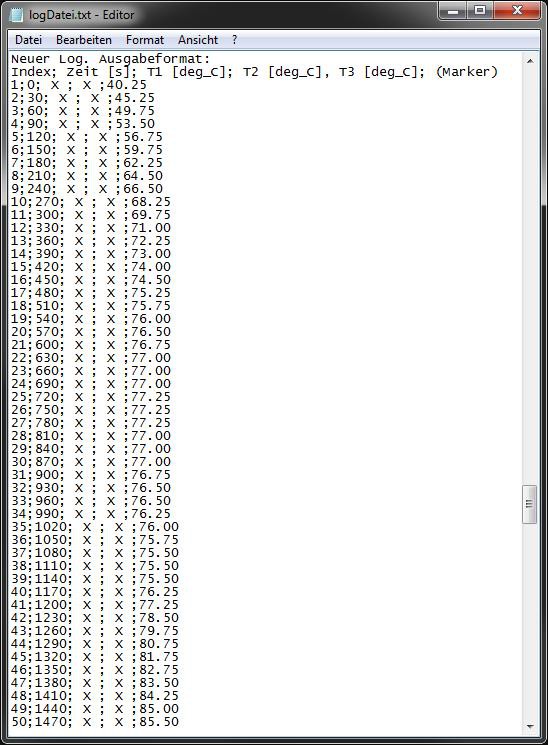
At the moment the logger uses just one file and adds each log to the file. Structure is: INDEX ; TIME[s] ; Temp.1 ; Temp.2 Temp.3 ; [MARKER]
Here's an example I recently logged. It's the heating characteristics of my oven set to 80°C:
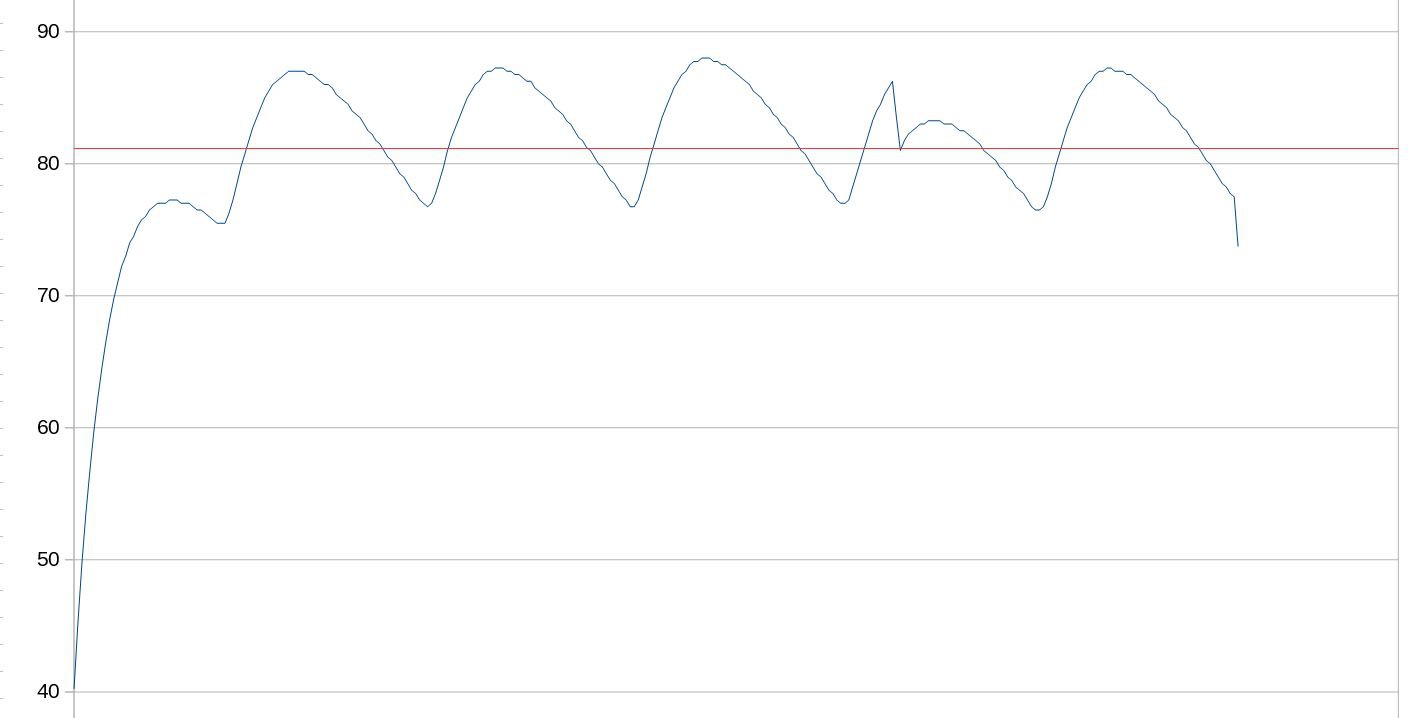
I had to keep it around 80°C because the infamous German Pumpernickel needs to bake around 24 hours (at least 16h by law) at that temperature. You can see how much it overshoots and how far it drops. But the average (red line) is a quite good 81°C... As the mass itself has some heat storing capacity over and undershooting is okay in this case.
Misc pictures
Sensors are connected with 3,5mm headphone sockets as they are small and snap in quite nicely.
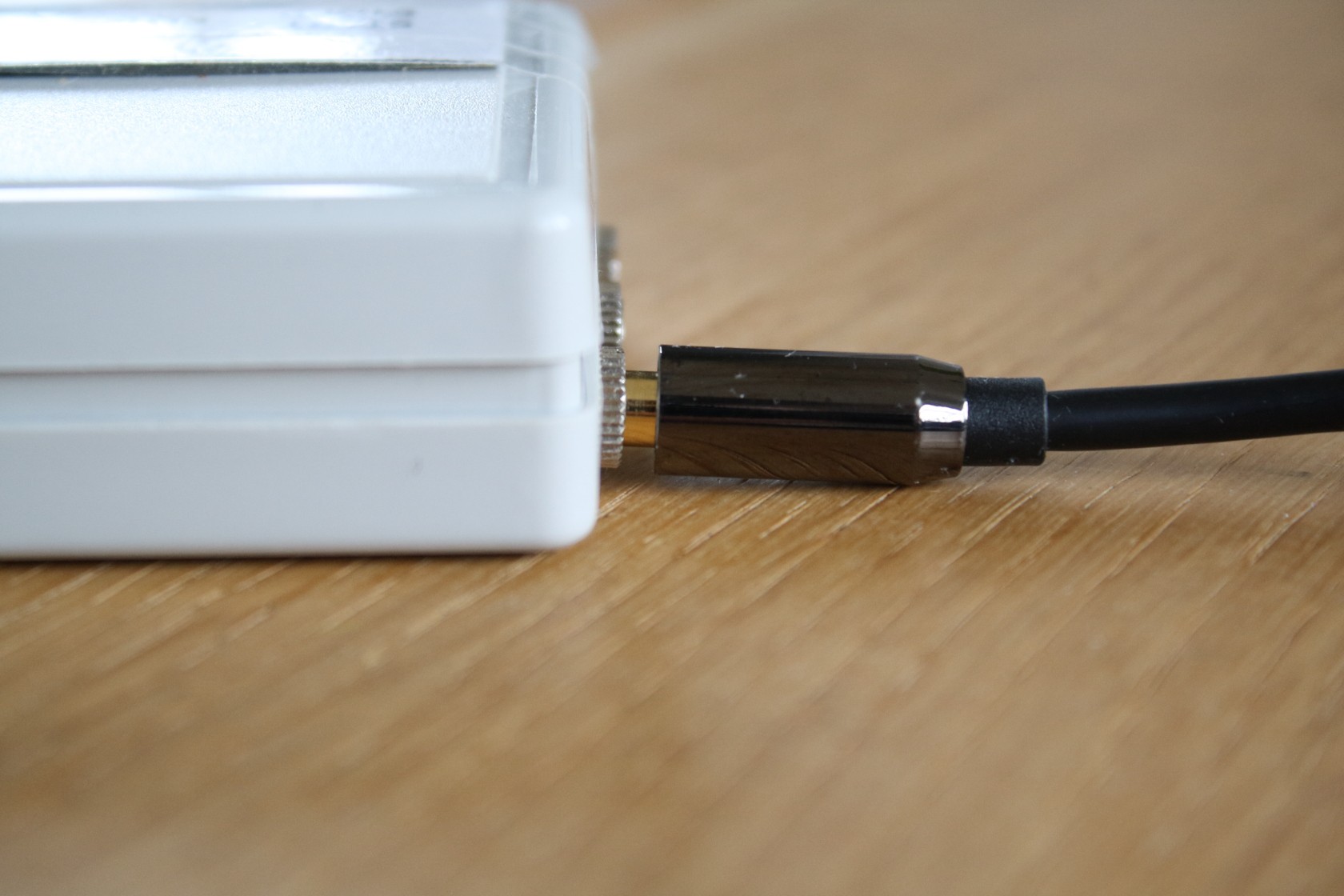

The dirty insides
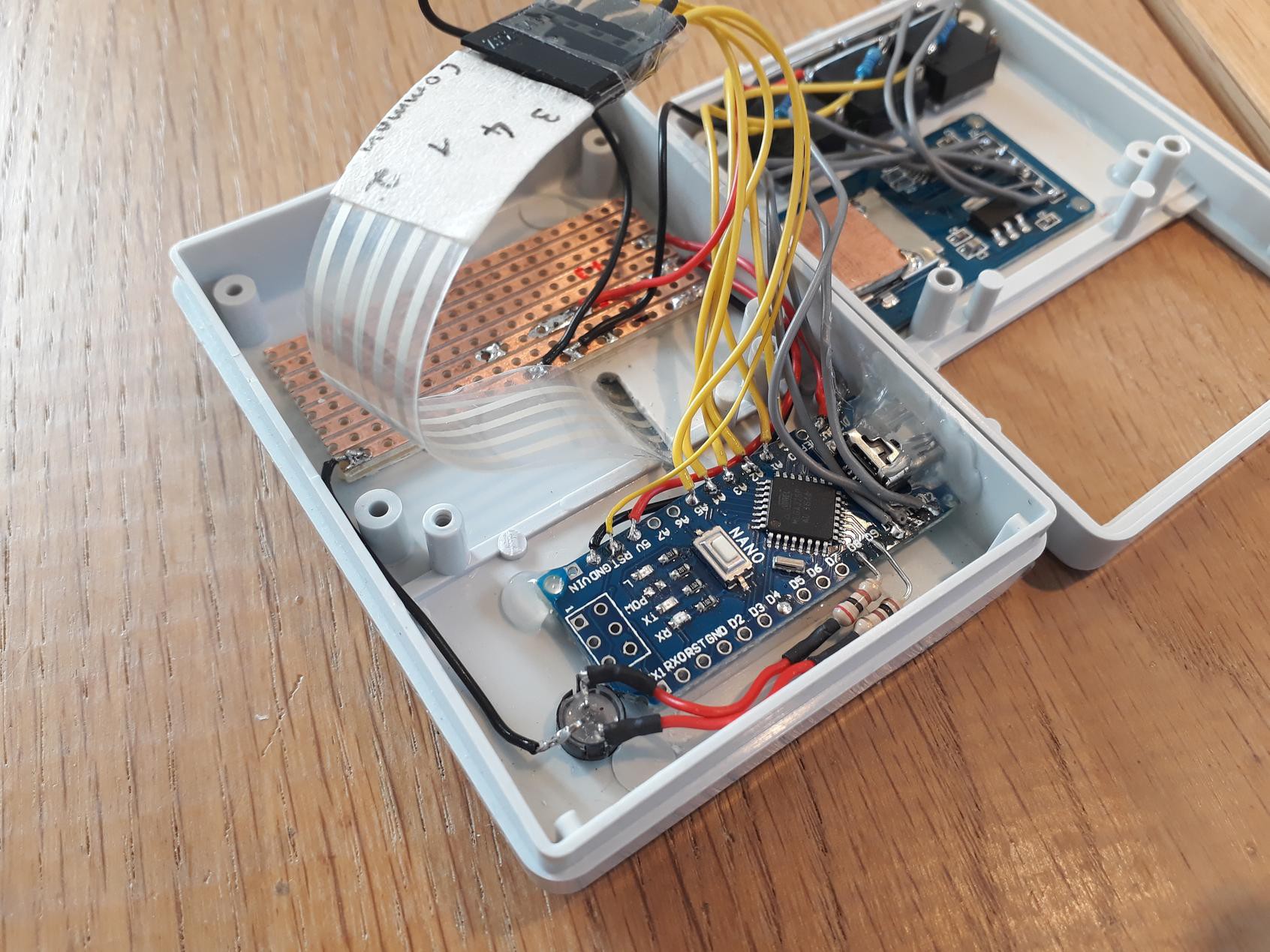
Just a clone Nano with the power-LED desoldered.
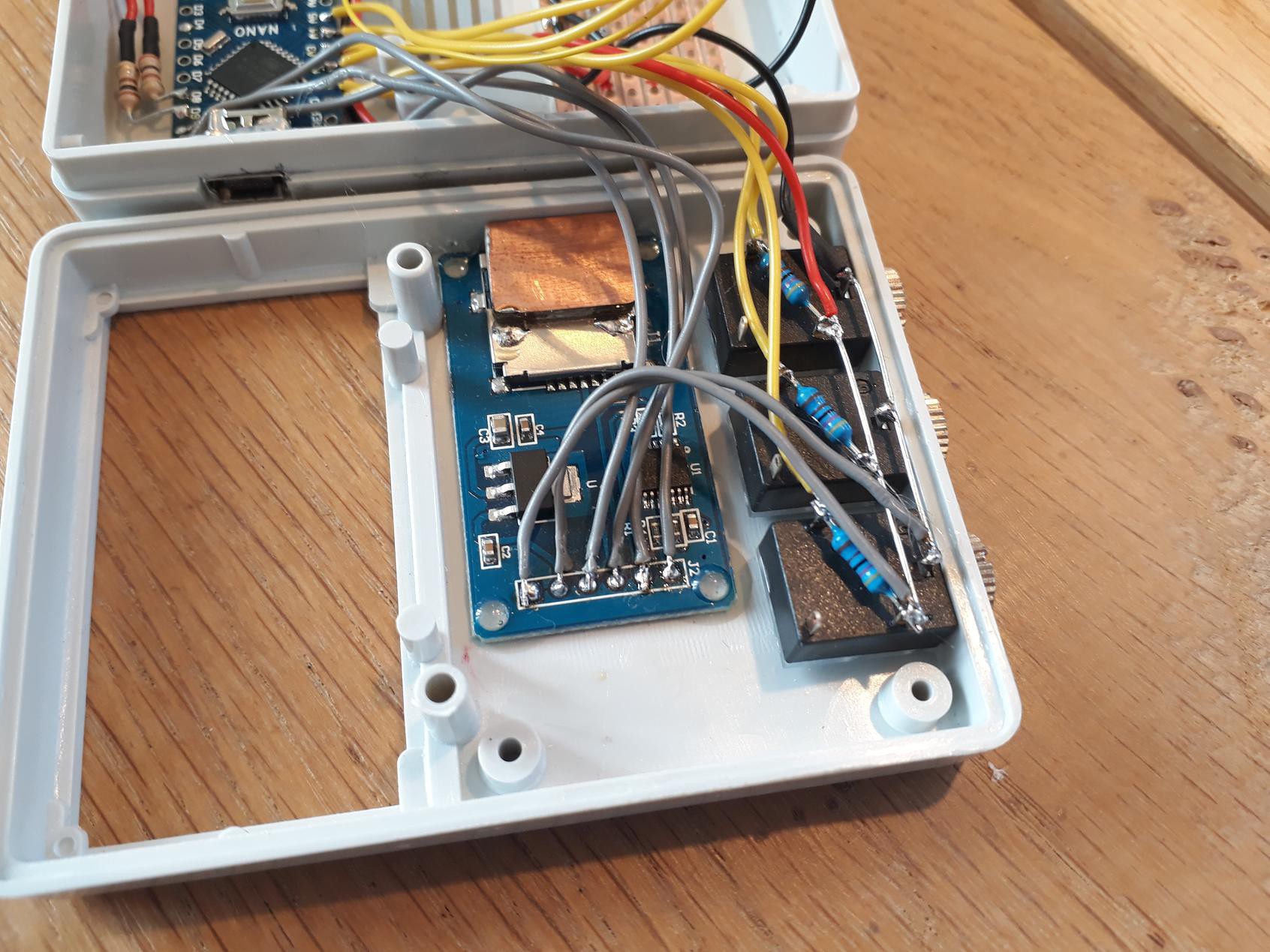
Micro-SD shield glued right in. The little copper plate is soldered onto the slot to prevent the SD card from falling into the case.
 Jan
Jan

 Bert van den Berg
Bert van den Berg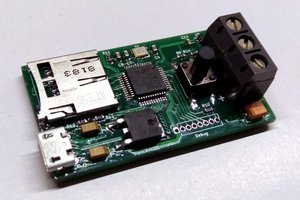
 MatYay
MatYay
 David Hopkins
David Hopkins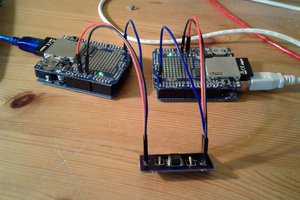
 Int-Mosfet
Int-Mosfet
You seem to have done many logger projects! That's cool. I could use info from your projects for my EXPLOG :)